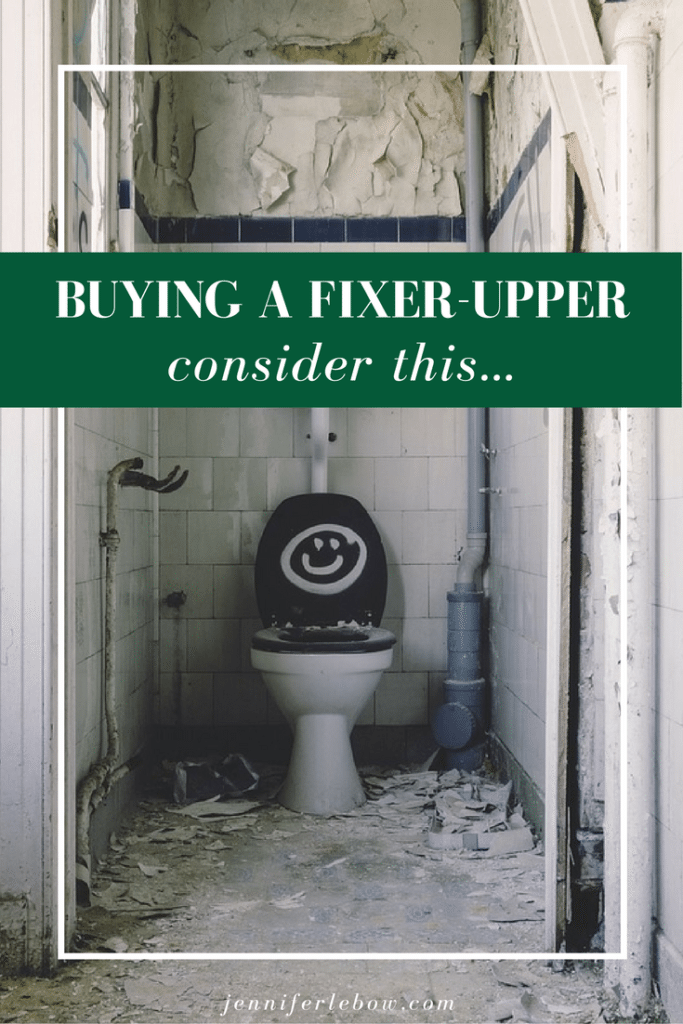
While many buyers shy away from houses that need work, there is a segment of the population that actively seeks “fixer-uppers”. For most people, the draw is that the price is usually attractive and that it allows the purchasers to customize all of the updates to suit their personal taste. If you think you might be of sturdy enough stock to consider a house that needs some TLC, here are a few points to consider:
- Not every neglected house is a good candidate to fix up. Why? Sometimes the layout just “doesn’t work” or the spaces are small or odd-shaped. Unless your renovation is going to include moving walls (which it certainly may!), think about the things that are not going to change even with brand new fixtures and finishes. Also, consider the location and whether the upgrades you’re planning may outstrip the value of the neighborhood–if the other houses are all more modest in size or in poor condition, or if the schools are not well-rated or the street backs to a highway–these factors often prevent the maximum value of the homes to go beyond a certain point. This phenomenon is often referred to as “over-improving.” If resale value is not important to you, this consideration will be less important. Finally, what about the scope of the project? If the foundation is unsound, or there is mold throughout the walls or something major wrong with the structure, it might not be worth it.
- I mentioned resale in the paragraph above. While you almost never (unless you are a contractor and won’t pay for labor and will buy your materials at a discount) recoup all of the money you put into a rehab, smart, informed decisions about how and which areas to update can minimize the financial impact down the line. As a general rule of thumb, “flipping” a house (buying it for the purpose of updating it and then reselling it, often not ever living in it) is not cost-effective for most lay people. Again, for builders/contractors, it’s a slightly different story. If you are going to buy a fixer-upper, my recommendation would be to spend the time to research different materials and options for the individual projects you plan to do and ask your realtor for an estimate of return on investment for each. If the purchase is not strictly an investment, then try to see any losses as the cost of having a nicer home. For example, if you spend $75,000 updating a kitchen and that upgrade, 10 years later is worth $50,000 to the next buyer, then the $25,000 of “loss” might be better viewed as the cost/value of that new terrific kitchen you’ve been enjoying for the last 10 years. It’s tough to quantify, but important to not disregard the increased quality of life you’ve enjoyed.
- Have an inspection. Unless you are a structural engineer or very confident in your ability to judge the integrity of the systems and structure of the house, you want to be sure you’re not biting off more than you can chew. If there are major problems, again, consider the return on investment if you plan to repair them. Often, things like that can be expensive but have very low return on investment because buyers expect a house to have a certain base level of integrity. Additionally, those repairs can exceed what was originally visible before the work begins. Sometimes, the costs go way beyond original estimates.
- Financing: be aware that there are special loans available for properties that require a lot of renovating. Be sure to talk to your lender before heading down the fixer-upper path.
For more on what to watch out for when considering buying a fixer upper, click here.


Leave a Reply